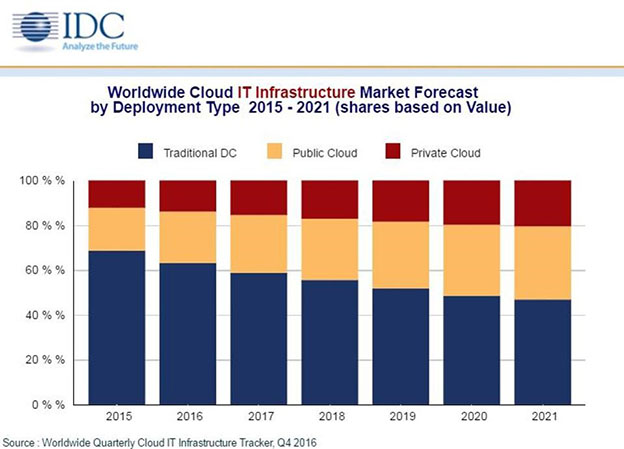Are You Migrating Applications to the Cloud?
According to a recent report from IDC, by 2020, almost half of IT infrastructure spend will be on cloud IT infrastructure.
Organizations migrate applications to the cloud for many reasons – lowering cost of IT due to economies of scale, scalability due to elastic consumption, operational instead of a capital expense and the ability to test and provision a new application quickly and thus a faster time to market.

Increasing maturity of cloud-based infrastructure enables organizations to deploy business critical applications in public and private cloud. However, the process of migration of applications to the cloud is not easy. The flexibility and the cost benefit that drives the shift to the cloud also presents many challenges – security, business continuity and application availability, latency reduction, issues with visibility and SLA guarantees and isolation of resources. Some other aspects that need thought – licensing, lock-in with a cloud service provider, architecture to address hybrid deployment, shadow IT, automation, user access, user privacy, and compliance needs.
[You might also like: Cloud Load Balancing – Does your provider have what it takes?]
One of the main challenges for enterprises moving to a cloud infrastructure is how to guarantee consistent quality of experience to consumers across multiple applications, many of which are business critical, developed using legacy technologies and still hosted on premise. Application delivery and load balancing technologies have been the fundamental components providing availability and latency reduction for applications. In order to enable seamless migration of business critical applications to the cloud, the same load balancing and application delivery infrastructure may be used for cloud applications.
Along with quality of experience, organizations need to look at the security policies. Sometimes policies require integration with a cloud service provider’s infrastructure or require new capabilities to complement on premise architecture while addressing denial of service, application security and compliance for new attack surface exposed by applications in the cloud.
Convenience and productivity are often the drivers for adopting shadow IT – usually in the cloud. Employees deploy solutions not approved by their IT departments with the reasoning that going through the traditional route for approvals is too complicated or time consuming. One way to address security and availability concerns for the enterprise exposed through shadow IT is to ensure that the security and availability also are included as part of IT self-service, orchestration and automation systems, without requiring additional effort from those driving adoption of shadow IT applications.
Summary
Moving applications to the cloud requires thought. A cloud-only approach may not always be the best solution for all your applications. A careful design may drive a hybrid deployment that adhere to enterprise security and disaster recovery policies while enabling innovation through self-service, automation.
For additional details:
https://www.radware.com/products/cloud-services/




